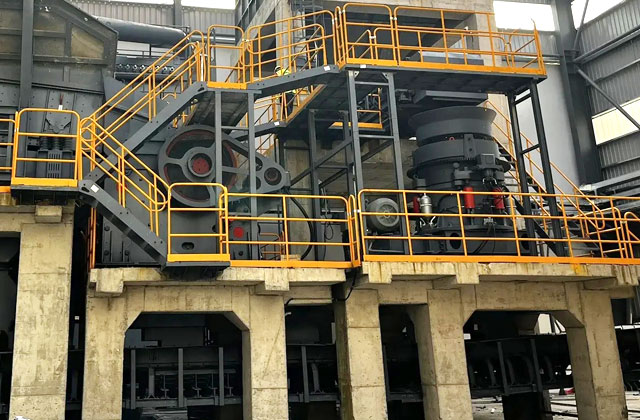Introduction
Rock crushers are vital pieces of equipment in the mining industry, used for breaking down large rocks into smaller, more manageable pieces. They come in various types and sizes, each designed to handle different types of rock and achieve specific sizes of output material. This equipment plays a crucial role in the extraction of valuable minerals and metals from ore bodies.

Types of Rock Crushers
- Jaw Crushers
Jaw crushers are often the primary crushers in mining operations. They operate on a simple principle: a pair of jaws, one fixed and one movable, compresses the rock between them. The movable jaw moves back and forth to crush the rock against the stationary jaw. Jaw crushers are known for their robust construction and ability to handle large, hard materials. They are effective in primary crushing applications and are ideal for reducing large chunks of rock into more manageable sizes.
- Cone Crushers
Cone crushers are secondary crushers used to further reduce the size of materials after they have been initially broken down by primary crushers. They operate on a similar principle to gyratory crushers but with a more compact design. The rock is fed into the top of the cone and is crushed between the moving mantle and the stationary bowl liner. Cone crushers are effective for producing finer aggregates and are commonly used in secondary and tertiary crushing stages.
- Impact Crushers
Impact crushers use high-speed impact forces to break rocks into smaller pieces. There are two main types: horizontal shaft impact (HSI) crushers and vertical shaft impact (VSI) crushers. HSI crushers have a high-speed rotor with hammers or blow bars that strike the rock, while VSI crushers use a high-speed rotor to fling rocks against an anvil or impact plate. Impact crushers are favored for their ability to produce a high-quality, cubical product and are used in various applications, including aggregate production and recycling.
- Gyratory Crushers
Gyratory crushers are similar to jaw crushers but have a steeper cone shape and a more complex motion. They consist of a concave surface and a conical head that gyrates within it. As the cone rotates, the rock is crushed between the surface and the head. Gyratory crushers are used for primary crushing of large volumes of rock and are known for their high capacity and efficiency.
Applications in Mining
Rock crushers are used in various stages of the mining process. In the exploration stage, they help in breaking down rock samples to determine mineral content. During the extraction phase, crushers are employed to reduce ore to a manageable size for further processing, such as milling and beneficiation. In the post-extraction phase, they are used to produce aggregate materials for construction and other industrial applications.
Choosing the Right Rock Crusher
Selecting the appropriate rock crusher depends on several factors, including the type of material being processed, the desired size of the final product, and the capacity requirements. Factors such as rock hardness, abrasiveness, and moisture content also influence the choice of crusher. Additionally, considerations such as operational costs, maintenance requirements, and environmental impact play a role in the decision-making process.

